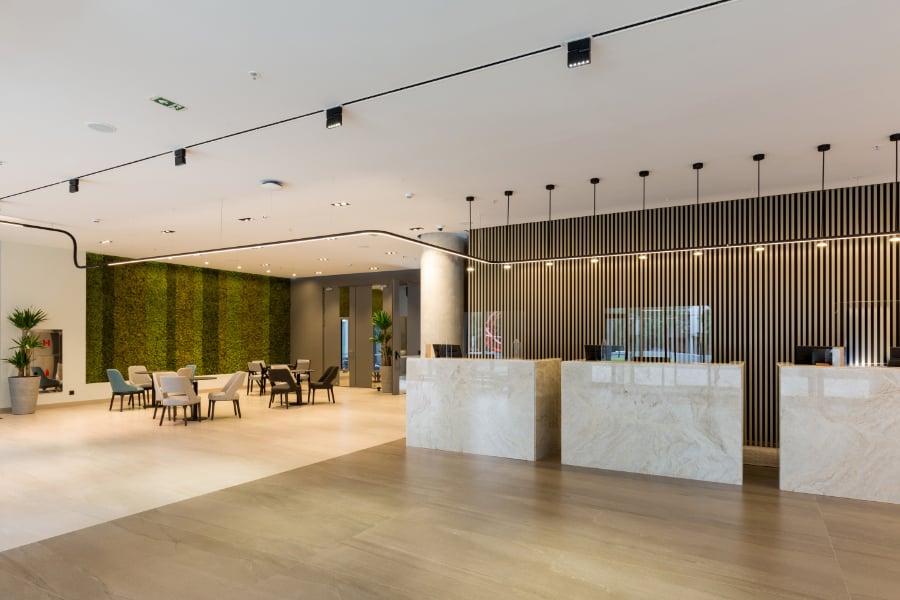When you lease commercial real estate, you typically end up paying load factors, common area charges, or both. At first glance, this might not seem like a great deal. After all, you're paying for your space AND you're paying for space you don't use and features that the whole building shares. However, what these charges really mean is that you're harnessing the power of economies of scale to get more value than you would get if you were completely on your own.
Extra Charges in Commercial Real Estate
In commercial real estate, you can usually expect to pay rent on space that you don't occupy, and that rent gets paid through the load factor. In addition, you also pay the cost of maintaining the building's common features through common area maintenance charges.
%20Charges.jpg?width=958&name=6%20Tips%20When%20Dealing%20With%20CAM%20(Common%20Area%20Maintenance)%20Charges.jpg)
Your load factor is a measure of how much space gets added on to yours to account for the shared areas of the buildings. For instance, if a building has 200,000 square feet of tenant spaces but measures a total of 230,000 square feet, it would have a 15 percent load factor, since the extra 30,000 square feet of common area space is 15 percent of the 200,000 square feet of tenant space. When you lease space in this building, the landlord adds that load factor -- 15 percent -- to your space's measurement, and uses that total "rentable" space measurement to charge you rent. So, if you occupy a 2,500 square foot space, the landlord will multiply that by 0.15 to get your share of the common area -- 375 square feet. He or she will then add together the two spaces -- 1,500 and 375 square feet -- to calculate your total "rentable" area of 1875 square feet. If your rent is $50 per square foot, your annual rent would then be $93,750.
In buildings where you pay expenses, you will also pay common area maintenance charges. To calculate those, the landlord adds up all of the expenses of the building that your lease allows him or her to recover, then charges you your "fair" (technically, pro-rata) share of those charges. For instance, in the building above, the owner would calculate your pro-rata share of the building by dividing your suite's actual size (2500) into the size of all of the tenant spaces (200,000) to find that your pro-rata share is 1.25 percent (0.0125) of the building. He would then multiply your share by the building's expenses -- $3 million, for example -- to find your common area expense share -- $37,500 here.
The Best $131,250 You'll Ever Spend!
In this example, a tenant would pay an extra $131,250 in load factors and common area charges. Let's take the common area charges first. If you had your own building, you would have to pay 100% of those costs for your space. You'd have to maintain your entire parking lot. And pay for an entire dumpster. And pay an entire service contract for your HVAC systems. In this case, you only pay 1.25 percent of the total building's expenses. And it's a lot cheaper to pay 1.25 percent of the cost of having a garbage company pick up 3 big dumpsters a day than to pay to have a small one picked up every couple of weeks. Quantity saves you money.

The load factor is a better deal. First, you need to have some common area spaces to use your actual rented space. After all, without hallways and lobbies, how would your employees get to work? Here's another example: pretty much everyone goes to to the restroom during the work day. If you have 20 or fewer employees, though, most of the time, most of them won't be in the bathroom. Having a shared restroom means that you aren't paying the entire cost of an asset that remains unused most of the time.
When it comes to building amenities, the load factor becomes an even better deal. Many Class A buildings and parks offer conference facilities. And many companies require access to a large conference room once a week (or less often) for meetings, training sessions or client events. Imagine what it would cost to have that space in your office where it would sit empty most of the time. If your building offers that feature, though, it gets built into your load factor where you pay a very small amount for it, but still have access to it when you need it. The same applies to amenities like fitness centers, office-park cafes, concierge desks and the like. Your load factor might be an expense -- but it is one that potentially gives you millions of dollars worth of features every year at very little cost.
Subscribe to our blog for more CRE tips!!







